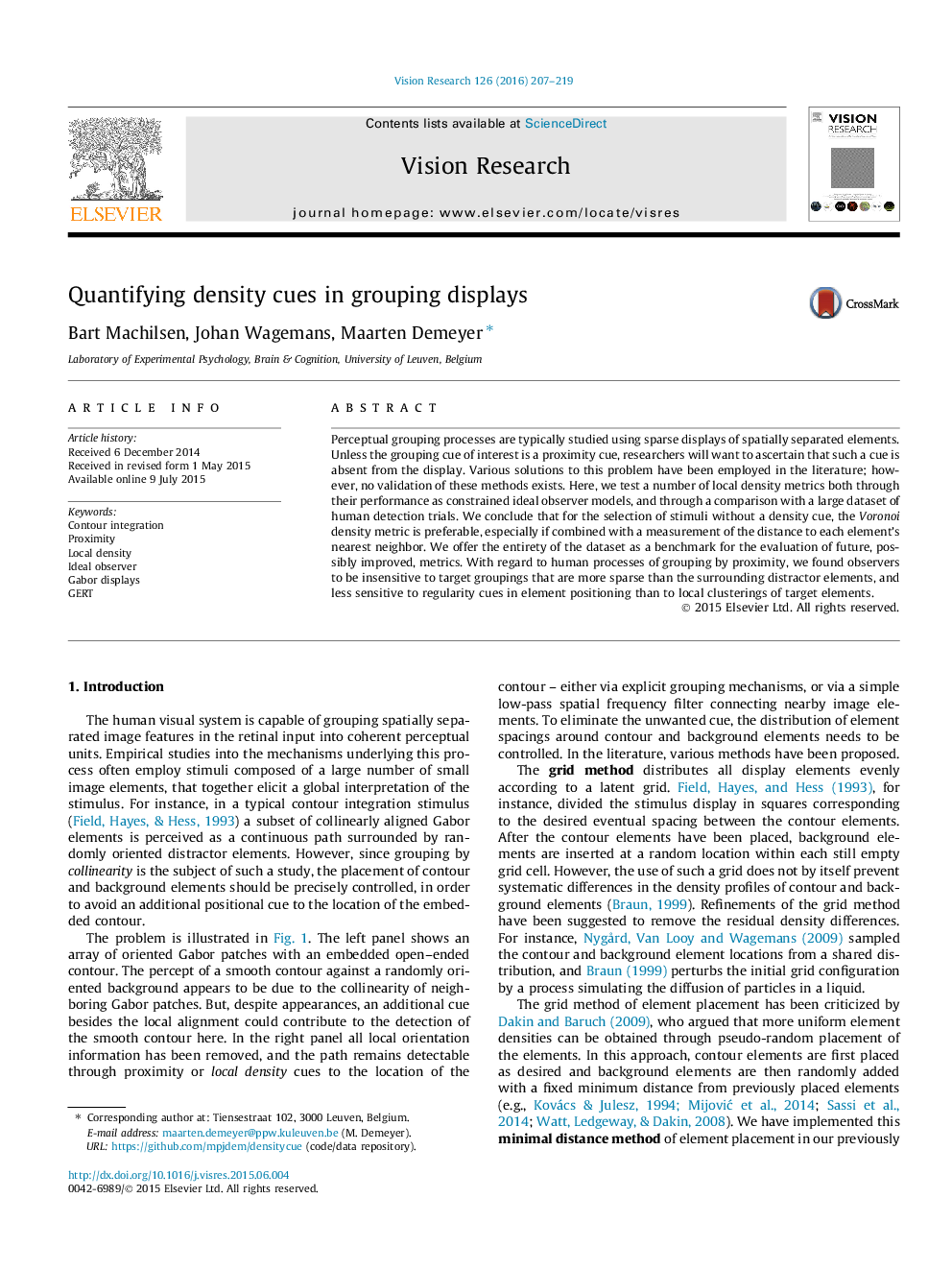| Article ID | Journal | Published Year | Pages | File Type |
|---|---|---|---|---|
| 6202922 | Vision Research | 2016 | 13 Pages |
â¢Local density differences are often unwanted cues in perceptual grouping displays.â¢We quantify and evaluate multiple local density metrics.â¢Specific recommendations are made, depending on the goal (avoiding density cues, predicting human performance).
Perceptual grouping processes are typically studied using sparse displays of spatially separated elements. Unless the grouping cue of interest is a proximity cue, researchers will want to ascertain that such a cue is absent from the display. Various solutions to this problem have been employed in the literature; however, no validation of these methods exists. Here, we test a number of local density metrics both through their performance as constrained ideal observer models, and through a comparison with a large dataset of human detection trials. We conclude that for the selection of stimuli without a density cue, the Voronoi density metric is preferable, especially if combined with a measurement of the distance to each element's nearest neighbor. We offer the entirety of the dataset as a benchmark for the evaluation of future, possibly improved, metrics. With regard to human processes of grouping by proximity, we found observers to be insensitive to target groupings that are more sparse than the surrounding distractor elements, and less sensitive to regularity cues in element positioning than to local clusterings of target elements.
